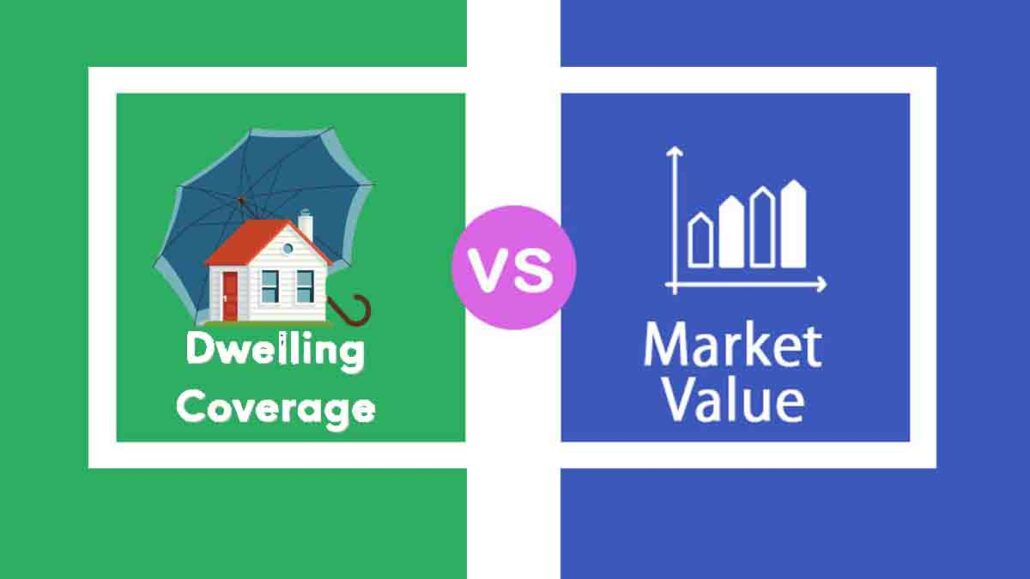Dwelling Coverage vs Market Value. When purchasing homeowners insurance, one of the most critical decisions is determining the appropriate amount of dwelling coverage. This coverage protects your home’s structure in case of damage or loss. However, it’s essential to distinguish between dwelling coverage and market value. While they are related, they are not synonymous.

Dwelling coverage refers to the amount of insurance you purchase to protect your home’s structure. It is typically expressed in dollars and cents. Market value, on the other hand, is the estimated price at which your home could be sold on the open market. Understanding the difference between these two concepts is crucial for ensuring that your home is adequately protected.
Dwelling Coverage vs Market Value
When it comes to home insurance, two key terms often arise: dwelling coverage and market value. While they may sound similar, they represent distinct concepts that significantly impact your policy’s protection.
Dwelling Coverage
Dwelling coverage is the amount of money your insurance company will pay to rebuild or repair your home in the event of a covered loss, such as a fire, storm, or theft. It’s based on the cost of rebuilding your home to its pre-loss condition, using similar materials and quality.
Market Value
Market value, on the other hand, is the estimated price at which your home could be sold on the open market. It’s influenced by factors like location, size, condition, and recent sales of comparable properties.
This table illustrate the various factors impacting dwelling coverage and market value.
| Factor | Dwelling coverage | Market value |
| Location | Coverage may vary based on geographical location (e.g., flood zones, earthquake areas). | Location can significantly influence property value, with desirable areas commanding higher prices. |
| Age of the home | Older homes may require more extensive repairs or renovations, potentially affecting coverage needs and value. | Newer homes generally have higher market values, but factors like construction quality and amenities also play a role. |
| Construction materials | The type of materials used in construction can influence both coverage and value. For example, a brick home may be considered more durable than a wooden one. | Higher-quality materials can increase a home’s market value. |
| Size of the home | Larger homes typically require more coverage to protect the structure. | The size of a home can be a factor in determining its market value, but other factors like location and condition are also important. |
| Condition of the home | A home in good condition will generally require less coverage and may have a higher market value than one in poor condition. | Regular maintenance and updates can help maintain or increase a home’s value. |
| Amenities | Additional features like a pool, garage, or finished basement can impact both coverage needs and market value. | Desirable amenities can increase a home’s appeal and value. |
| Market trends | Changes in the real estate market can affect both coverage and value. For example, a rising market may increase property values. | Local market trends, including supply and demand, can influence property prices. |
Why the Difference Matters
While market value is a common reference point for homeowners, it’s not always the best indicator of the amount of coverage needed. Here’s why:
- Reconstruction Costs: The cost of rebuilding your home can fluctuate over time due to changes in building materials, labor costs, and local regulations. Market value might not reflect these current costs.
- Underinsurance: If your dwelling coverage is less than the actual cost of rebuilding your home, you could be underinsured. This can lead to significant out-of-pocket expenses in the event of a claim.
- Overinsurance: Conversely, if your dwelling coverage is significantly higher than the cost of rebuilding your home, you’re essentially paying for more coverage than you need.
Determining the Right Coverage
To ensure you have adequate protection, it’s crucial to determine the appropriate dwelling coverage for your home. Here are some factors to consider:
- Replacement Cost: This is the estimated cost to rebuild your home using similar materials and quality.
- Building Materials: The type of materials used in your home’s construction will influence the cost of rebuilding.
- Location: Geographic location can impact rebuilding costs due to factors like local building codes, labor availability, and natural disaster risks.
- Age of Your Home: Older homes may require more extensive repairs or renovations.
- Personal Belongings: While dwelling coverage typically applies to the structure itself, you’ll also need additional coverage for your personal belongings (contents coverage).
Frequently Asked Questions
Should my dwelling coverage be equal to my home’s market value?
Not necessarily. The cost of rebuilding your home can differ from its market value. It’s important to base your coverage on the replacement cost.
What happens if my dwelling coverage is insufficient?
If your coverage is inadequate, you may be responsible for out-of-pocket expenses to cover the difference between the claim amount and the actual cost of rebuilding.
How often should I review my home insurance coverage?
It’s recommended to review your home insurance coverage annually to ensure it aligns with your current needs and reflects any changes in your home or its value.
Can I increase my dwelling coverage if my home’s value increases?
Yes, you can adjust your coverage to match the increased value of your home. Contact your insurance provider to make the necessary changes.

